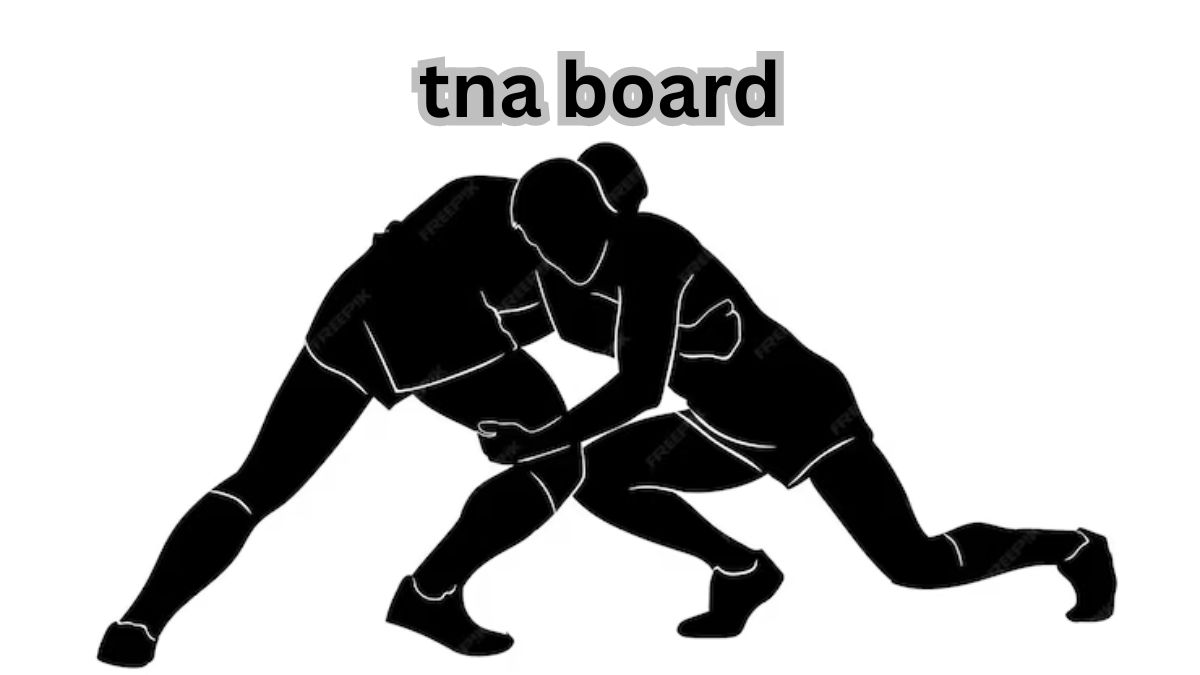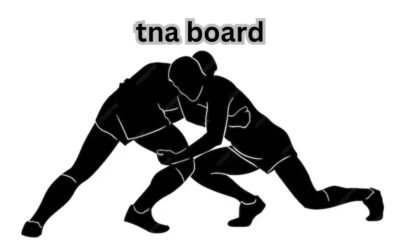GENERAL
The Mortgage Application Process: Steps to Secure Your Dream Home

Buying a home is one of the most significant investments you’ll ever make. For many, it’s not just about finding the perfect property; it’s also about securing a mortgage that aligns with your financial goals. The mortgage application process can feel daunting, but understanding each step can help you navigate it with confidence.
Whether you’re a first-time buyer or looking to upgrade, knowing what to expect will ease your worries and set you on the path to owning your dream home. From preparing your finances to selecting the right lender, every detail matters in this journey. Let’s delve into the intricacies of mortgages and arm you with all the information you need for a seamless experience!
Understanding Mortgages
Understanding mortgages begins with recognizing that they are loans specifically for purchasing real estate. When you take out a mortgage, you’re borrowing money to buy your home while using the property itself as collateral.
Interest rates can vary significantly based on market conditions and your credit score. A lower rate means more savings over time, making it crucial to shop around for the best deal.
Mortgages typically come in two forms: fixed-rate and adjustable-rate. Fixed-rate mortgages maintain the same interest rate throughout the loan term, providing stability in monthly payments. On the other hand, adjustable-rate mortgages may offer lower initial rates but can fluctuate later on.
It’s essential to understand terms like principal and equity too. The principal is what you borrow; equity builds as you pay off your loan or when property values rise. This knowledge empowers you to make informed decisions about home buying and financing options available to you.
Preparing for the Mortgage Application Process
Preparing for the mortgage application process is a crucial step toward homeownership. Start by assessing your financial situation. Understanding your credit score and debt-to-income ratio can provide insight into what you can afford.
Next, create a budget that includes all potential costs, not just the mortgage payment. Factor in property taxes, insurance, and maintenance expenses to get a more accurate picture of your future financial commitments.
Consider getting pre-approved for a mortgage. This process gives you an idea of how much lenders are willing to offer based on your finances. It also strengthens your position when making an offer on a house.
Gathering information about different types of mortgages will help you make informed decisions later on. Research options like fixed-rate or adjustable-rate loans to determine which suits you best as you embark on this exciting journey.
Gathering Necessary Documents
Gathering necessary documents is a crucial step in your mortgage application journey. Having everything organized can streamline the process and reduce delays.
Start with your financial records. This includes recent pay stubs, bank statements, and tax returns from the last two years. Lenders want to see proof of income stability and savings.
Next, don’t forget identification documents. A government-issued ID along with your Social Security number is essential for verification purposes.
If you’re self-employed or have additional sources of income, prepare relevant documentation like profit and loss statements or 1099 forms. These will help showcase your full financial picture.
If you’ve previously owned a home, be ready to provide details about that property as well. Every piece helps lenders assess your situation better.
Choosing the Right Lender
Selecting the right lender is a crucial step in your mortgage journey. With various options available, it’s important to do your homework.
Start by researching local and national lenders. Compare interest rates, fees, and customer service ratings. Online reviews can provide insights into other borrowers’ experiences.
Don’t hesitate to ask for referrals from friends or family who recently secured a mortgage. Personal recommendations often lead you to trustworthy lenders.
Next, consider the types of loans they offer. Some specialize in first-time homebuyer programs or specific loan products that may suit your needs better than others.
Engaging with multiple lenders can help you understand different offers and negotiation tactics. Building rapport with potential lenders will make the process feel more comfortable as you embark on this significant financial commitment.
The Application Process: Step by Step
The mortgage application process can seem daunting, but breaking it down into steps makes it manageable.
First, complete the loan application form accurately. This document gathers your personal and financial information.
Next, provide supporting documentation. Lenders typically require proof of income, tax returns, employment history, and bank statements. Having these organized will streamline the process.
After submission, expect a credit check. The lender assesses your creditworthiness to determine risk levels.
Once approved for underwriting, an underwriter reviews your entire profile meticulously. They may request additional documents or clarifications during this phase.
If everything checks out well with no issues arising from appraisals or inspections, you’ll receive a final approval letter confirming your mortgage terms.
Common Mistakes to Avoid
One common mistake is failing to check your credit score before applying for a mortgage. A low score can lead to higher interest rates or even denial of the application. Take time to review your credit report and address any discrepancies.
Another misstep is not budgeting for additional costs. Homeownership involves more than just the mortgage payment. Consider property taxes, insurance, and maintenance expenses in your financial planning.
Many applicants also overlook getting pre-approved. This step gives you a clearer idea of how much you can borrow and makes you a more attractive buyer when making offers.
Avoid making large purchases on credit prior to closing. New debts can alter your debt-to-income ratio, which lenders scrutinize closely during the approval process. Keeping finances stable is crucial at this stage.
What Happens After Your Application is Approved
Once your mortgage application gets the green light, excitement kicks in. You’re one step closer to owning your dream home.
First, you’ll receive a loan estimate from your lender. This document outlines the terms of your mortgage, including interest rates and closing costs. Review it carefully; understanding these details will help prevent surprises later on.
Next comes the underwriting phase. The underwriter evaluates all aspects of your financial profile and property value. They ensure everything aligns with the lender’s guidelines before final approval is granted.
After underwriting, you’ll move toward closing. A closing date will be set where you’ll sign crucial documents that finalize the transaction. It’s an important day that marks ownership transfer officially!
Don’t forget about homeowner’s insurance or title insurance during this time—they’re often required by lenders and essential for protecting your investment moving forward.
Tips for a Smooth Closing
Prepare early. Start gathering necessary documents well ahead of closing day. This includes your loan estimate, proof of insurance, and any other paperwork required by your lender.
Communicate with your real estate agent and lender consistently. Keeping everyone in the loop helps address potential issues before they escalate.
Do a final walkthrough of the property just before closing. This ensures everything is as expected and that any agreed-upon repairs have been completed.
Be ready to sign numerous documents on closing day. Understand what you’re signing; don’t hesitate to ask questions if something isn’t clear.
Bring appropriate payment for closing costs, whether via wire transfer or certified check. Confirm acceptable methods beforehand to avoid last-minute surprises.
Stay calm throughout the process. Closing can be stressful, but maintaining a positive attitude will help you navigate through it smoothly.
Understanding the Importance of a Mortgage
A mortgage is more than just a financial tool; it’s the key to homeownership. For many, owning a home represents stability and security. It allows you to build equity over time, transforming monthly payments into an investment.
Understanding mortgages helps demystify the process of purchasing your dream home. It’s essential to recognize how different types affect your finances, interest rates, and repayment terms.
Mortgages also empower individuals by providing leverage. With relatively small down payments, buyers can control significant assets. This means that even if you’re not sitting on piles of cash, you can still access opportunities in real estate.
Additionally, having a mortgage often comes with tax benefits. Deductions for interest paid can make homeownership even more appealing financially.
Navigating this landscape with knowledge makes all the difference when securing your future in the property market. Embrace learning about mortgages as part of your journey toward ownership.
Steps to Take Before Applying for a Mortgage
Before diving into the mortgage application process, it’s essential to prepare yourself. Start by assessing your financial health. Review your credit report and check for any discrepancies that may affect your score.
Next, create a budget. Knowing how much you can afford will guide you in selecting the right mortgage amount. Factor in all costs associated with homeownership, such as property taxes and insurance.
Consider saving for a larger down payment too. A higher upfront payment can lower monthly installments and reduce private mortgage insurance (PMI) costs.
Avoid making significant financial changes during this time. This includes switching jobs or taking on new debts, as lenders prefer stability when evaluating your application. By laying this groundwork, you’ll position yourself better when it comes time to apply for a mortgage.
The Different Types of Mortgages Available
When it comes to financing your home, understanding the different types of mortgages can make a significant difference. Each option caters to various financial situations and preferences.
Fixed-rate mortgages are among the most common. They offer stability with consistent monthly payments over the loan’s lifespan, typically 15 or 30 years. This predictability makes budgeting easier.
Adjustable-rate mortgages (ARMs), on the other hand, start with lower initial rates that can change after a set period. These might appeal to those planning to move before potential rate increases kick in.
FHA loans provide options for first-time buyers or those with less-than-perfect credit. Backed by the Federal Housing Administration, these loans require lower down payments and have more flexible qualification criteria.
For veterans and active-duty military members, VA loans are an excellent choice as they often come with no down payment and favorable terms. Understanding these distinctions can help you choose wisely based on your unique situation.
Documents Needed for a Mortgage Application
When applying for a mortgage, having the right documents ready can streamline your process. Lenders require specific paperwork to assess your financial situation.
Start with proof of identity. A government-issued ID, like a driver’s license or passport, is essential. Next, gather income verification documents such as pay stubs from the last few months and W-2 forms from the previous two years.
Don’t overlook tax returns; lenders want to see at least two years’ worth. If you’re self-employed, prepare additional documentation like profit-and-loss statements.
You’ll also need to provide details about your assets. Bank statements from checking and savings accounts help demonstrate financial stability. Any existing debts should be documented too—this includes student loans or credit card statements.
Having these documents in order makes it easier for lenders to evaluate your application efficiently and effectively.
Tips for Choosing the Right Lender
Choosing the right lender can significantly impact your mortgage experience. Start by researching various lenders to understand their offerings.
Look for reviews and testimonials online. Past client experiences can provide insight into a lender’s reliability and customer service quality.
Compare interest rates, fees, and loan terms from multiple lenders. A small difference in rate can lead to substantial savings over time.
Check if the lender is transparent about their process. Clear communication is vital when navigating complex mortgage terms.
Consider local lenders as well; they may offer personalized services that larger institutions can’t match.
Don’t hesitate to ask questions during the initial meetings or calls. A good lender will be willing to explain options clearly without rushing you into decisions.
The Mortgage Application Process: Step by Step
Applying for a mortgage can seem daunting, but breaking it down into clear steps makes the process manageable. Start with filling out the mortgage application form. This document collects your personal information and financial details.
Next, expect to undergo a credit check. Lenders will assess your credit score, which plays a vital role in determining loan eligibility and interest rates.
Once that’s complete, be prepared for the lender to request additional documentation. They typically want proof of income, tax returns, bank statements, and any other relevant financial records.
After reviewing your application and documents, the lender conducts an appraisal on the property you wish to buy. This assessment ensures that its value aligns with what you’re willing to pay.
Once everything is approved, you’ll receive a loan estimate outlining terms and costs before moving towards closing. Each step brings you closer to securing your dream home without overwhelming complexity.
What to Expect After Your Application is Approved
Once your mortgage application is approved, excitement kicks in. But there are still steps to navigate before you get the keys to your new home.
First, you’ll receive a loan estimate detailing terms, interest rates, and closing costs. Review this carefully; it’s crucial for understanding what you’re agreeing to.
Next comes the underwriting process. Underwriters will confirm all information provided during your application. They might ask for additional documentation or clarification on certain points.
After underwriting clears everything, you’ll move toward closing. This involves signing multiple documents that finalize the mortgage agreement and transfer ownership of the property.
Keep communication open with your lender during this phase. They can guide you through any last-minute details or questions that may arise as you prepare for settlement day.
Remember to stay organized and ready; soon you’ll be moving into your dream home!
Common Mistakes to Avoid During the Mortgage Process
Navigating the mortgage process can be tricky. Several common mistakes can derail your plans.
One major pitfall is not checking your credit score early on. Understanding where you stand will help you avoid surprises later.
Another error is failing to compare loan options. Each lender has different rates and terms, which means shopping around could save you a lot of money.
It’s also easy to overlook paperwork requirements. Missing documents or submitting incomplete forms can slow down approval.
Don’t forget to maintain consistency in your finances during this time. Major purchases or changes in employment might raise red flags for lenders.
Ensure that you’re fully aware of all associated costs beyond just the monthly payments. Closing costs and insurance fees can add up quickly, affecting your budget significantly.
Conclusion
Navigating the mortgage application process can seem daunting, but understanding each step makes it much more manageable. From grasping the basics of mortgages to preparing your documents and choosing a lender, being informed is key.
Avoid common pitfalls by staying organized and proactive throughout the process. After submitting your application, remember that patience is essential as you await approval.
With these strategies in hand, you’re well-equipped to secure financing for your dream home. Getting a mortgage doesn’t have to be overwhelming; instead, see it as an exciting journey toward ownership and stability. Embrace the experience while keeping financial goals in focus for a successful outcome.
BLOG
How To Choose the Right Furniture for Small Spaces

Decorating a small space can be daunting. Whether settling into a cozy apartment or trying to maximize a compact room, choosing the right furniture is crucial to making your home feel spacious, comfortable, and functional. The key is to select pieces that save space, offer storage solutions, and fit the aesthetic of your home. This guide will explore strategies for picking the perfect furniture for small spaces, ensuring you achieve style and efficiency.
Understanding Your Space
Before deciding on the best furniture for your small space, it’s essential to understand the dimensions and layout of the area you’re working with. Measure your space carefully, noting architectural features like windows, doors, and built-in fixtures. This will help you determine the size and scale of furniture that would fit best. Having a clear vision of your space will also help you prioritize which pieces will be most functional daily. Applying digital tools or apps to visualize furniture placement can also be beneficial, allowing you to experiment with different configurations without physically moving heavy items. Additionally, when shopping for furniture, don’t forget to look for a promo code to save on your purchases and make the most of your budget.
Opt for Multi-Functional Furniture
In small spaces, every piece of furniture should earn its keep by serving multiple purposes. Consider investing in items like a sofa bed, which can provide seating during the day and a restful place to sleep at night. A dining table that doubles as a workspace can be invaluable for those who work from home. Additionally, ottomans with storage inside can serve as a coffee table, extra seating, and a place to stow blankets or magazines. Another clever multi-functional piece is a bench with integrated storage, perfect for entryways or dining nooks.
Choose Light and Airy Pieces
Visually heavy furniture can make a small space feel cramped. Opt for pieces made from light-colored materials or those with sleek frames to maintain a sense of openness. Avoid bulky armchairs or ornate dining sets; look for furniture with open legs and profiles that allow light to pass through, creating an airy atmosphere. Glass or acrylic tables, for instance, provide functionality without adding visual clutter. Choosing furniture with mirrored surfaces can also contribute to a sense of spaciousness, reflecting light and creating an illusion of a larger area.
Maximize Vertical Space
It’s essential to capitalize on all available space in small rooms, including the often-overlooked vertical dimension. Consider tall bookshelves, which provide ample storage and draw the eye upward, creating the illusion of heightened ceilings. Wall-mounted shelves or cabinets can also offer storage without encroaching on floor space, making them ideal for tight quarters. Another effective strategy is to use pegboards or wall hooks for hanging items, freeing up floor space and adding a decorative element to your walls.
Incorporate Mirrors
Mirrors are a well-known trick for making small spaces appear more prominent. They reflect light and create a visual depth that can enhance the feeling of spaciousness in a small room. Consider placing a large mirror opposite a window to amplify natural light or using smaller mirrors strategically around the room to make focal points and add artistic flair. Beyond the traditional placement, mirrored furniture—such as a mirrored console table—can serve functional purposes while amplifying the area’s openness.
Invest in Convertible Pieces
Convertible or foldable furniture can be a lifesaver in small spaces. Items like drop-leaf tables, which can expand or collapse based on your needs, or fold-away desks, which provide a workspace without a permanent footprint, are practical investments. Murphy beds, which fold up into a wall unit when not in use, are another excellent option for maximizing a room’s usability. Additionally, consider wall-mounted pull-down desks or tables in the kitchen for flexible eating and preparation surfaces.
Prioritize Storage Solutions
One of the biggest challenges in small spaces is managing clutter. Selecting furniture with built-in storage can help mitigate this issue. Look for beds with drawers underneath, coffee tables with shelves or compartments, and sofa seats that lift to reveal hidden storage. These solutions ensure ample space to store items out of sight without additional furniture. Modular storage units that can be reconfigured or expanded as required can adapt to changing storage demands.
Mind the Proportions
Proportion is an important concept when dealing with limited space. Furniture that is too large will overwhelm the room, while pieces that are too small can appear out of place. Scale down traditional furniture sizes to suit your space but retain functionality, ensuring an appropriate balance. Consider customizable or modular furniture options tailored to fit your dimensions and needs. Additionally, placing taller pieces in corners or at the ends of a furniture group can create a more organized look.
Maintain Cohesive Style
Even in a small space, it’s essential to maintain a cohesive style throughout your furnishings to create a sense of harmony. Stick to a consistent color palette and design theme to prevent the room from becoming disjointed. This continuity can make the space more open and organized, providing a pleasant environment. Mixing these materials and textures within the same color family can add depth and interest, avoiding monotony while keeping the design streamlined.
Conclusion
Choosing furniture for a small space requires thoughtful consideration and a strategic approach. By understanding the dimensions of your room, opting for multifunctional and proportionally appropriate pieces, and leveraging vertical space, mirrors, and convertible furniture, you can make a living area that feels both spacious and stylish. Emphasizing storage solutions and maintaining a cohesive design theme further enhances your small space’s utility and visual appeal. With these tips, you can confidently select the right furniture to transform your compact quarters into a welcoming and efficient home.
GENERAL
Understanding TNA Board: A Comprehensive Guide for Beginners

Welcome to the vibrant world of TNA Board! If you’re new to this dynamic community, you might be wondering what it’s all about. The TNA Board serves as a hub for fans and professionals alike, providing a platform for sharing insights, experiences, and opportunities. Whether you’re an avid supporter of TNA wrestling or simply curious about its broader connections within the Texas Nurses Association, there is something here for everyone.
This comprehensive guide will help you navigate through various aspects of the TNA Board. From understanding community dynamics to exploring unique marketplace offerings and resources available at your fingertips—this post is your go-to source. Let’s dive in and uncover everything that makes the TNA Board such an exciting place!
Introduction to TNA Board
The TNA Board is a vibrant community centered around the Texas Nurses Association. It serves as a platform for nurses, healthcare professionals, and nursing students to connect, share experiences, and access resources tailored specifically for their needs.
This board promotes professional development while advocating for excellence in nursing practice across Texas. Members engage in discussions that enhance their understanding of current issues within the healthcare sector.
As a beginner exploring the TNA Board, you will find valuable insights into best practices and networking opportunities. The environment fosters collaboration and growth among its diverse members who are passionate about enhancing patient care throughout the state.
Navigating TNA Board Community
Navigating the TNA Board community is an enriching experience for both newcomers and seasoned members. The platform thrives on collaboration, offering various discussion forums where users can share insights and seek advice. Engaging actively in these conversations fosters connections and enhances your understanding of key topics.
Users can also explore dedicated sections tailored to specific interests within the community. This includes areas focused on professional development, networking opportunities, and legislative updates that impact nursing practices in Texas.
Participating in events organized by the TNA Board will further immerse you into the vibrant culture. These gatherings not only provide educational content but also create lasting relationships among fellow nurses.
TNA Board Committees Overview
The TNA Board is structured into various committees, each focused on specific areas of interest and concern within the organization. These committees play a vital role in shaping policies, planning events, and addressing member needs.
Members can join different committees based on their expertise or interests, fostering collaboration among peers. This engagement not only enhances individual professional growth but also strengthens the community as a whole.
Each committee meets regularly to discuss ongoing projects and initiatives. They provide valuable insights that help guide the board’s decisions while ensuring members’ voices are heard across all levels of operation.
Texas Nurses Association: Connecting with TNA
Connecting with the Texas Nurses Association (TNA) is essential for anyone in the nursing profession. TNA serves as a vital resource, offering support and advocacy for nurses statewide. Engaging with this community can enhance your professional journey.
Members can access various benefits, including networking opportunities, educational resources, and legislative updates. Staying informed about changes in healthcare policies allows you to advocate effectively for both yourself and your patients.
Participating in TNA events and forums fosters connections with other professionals who share similar experiences and challenges. Building relationships within this network encourages collaboration and growth throughout your nursing career.
Exploring TNA Board Marketplace
The TNA Board Marketplace is a dynamic platform for members to buy, sell, and trade goods related to the TNA community. Here, you can find collectibles like merchandise, memorabilia from events, or even fan art that celebrates your favorite wrestlers.
Members benefit from exclusive deals and offers not available elsewhere. It’s an excellent way to connect with other fans who share similar interests while exploring unique items that enhance your passion for TNA.
Additionally, the marketplace fosters a sense of community. Engaging in transactions helps build relationships among members and creates opportunities for networking within the broader wrestling culture.
TNA Impact Wrestling DVD Board Game: A Closer Look
The TNA Impact Wrestling DVD Board Game combines the excitement of wrestling with interactive gameplay. Designed for fans and gamers alike, it offers a unique experience that captures the essence of TNA’s action-packed matches.
Players can step into the ring as their favorite wrestlers, strategizing moves and competing against friends. With various game modes available, everyone can enjoy different styles of play tailored to their preferences.
Additionally, the game features high-quality graphics inspired by iconic moments in TNA history. Whether you’re a long-time fan or new to wrestling culture, this board game promises hours of fun while celebrating your love for TNA Impact Wrestling.
Connecting with TNA Board Staff and Resources
Connecting with TNA Board staff is essential for accessing valuable resources. The team is dedicated to supporting members by providing information and guidance tailored to individual needs.
You can reach out via email or through the official TNA website, where you’ll find a contact form that allows for direct communication. Staff members are usually quick to respond, ensuring you get the assistance you require.
Additionally, consider joining online forums or attending webinars hosted by TNA Board staff. These events offer opportunities to learn more about available resources while connecting with fellow members who share similar interests and concerns within the community.
Conclusion
The TNA Board serves as an essential platform for individuals interested in various aspects of the Texas Nurses Association. Understanding its functions and community can significantly enhance your experience within this network.
As you explore committees, resources, and products like the TNA Impact Wrestling DVD board game, you’ll discover numerous opportunities to engage with fellow members. This engagement not only enriches your professional journey but also fosters valuable connections.
Whether you’re a newcomer or a seasoned member, participating actively on the TNA Board opens doors to learning and collaboration. Embrace the wealth of information available and make your mark in this vibrant community.
FAQs
What is the purpose of the TNA Boards?
The TNA Board aims to support and advocate for nurses in Texas. It focuses on professional development, legislative advocacy, and community engagement.
How do I become a member of the TNA?
Joining is simple. You can visit their official website, fill out an application form, and pay your membership fees online.
What types of resources are available through TNA?
TNA offers various resources including educational materials, networking opportunities, leadership training programs, and access to exclusive events.
Can I participate in committees without prior experience?
Yes! The TNA encourages participation from all members regardless of experience level. They value fresh perspectives and new ideas.
Where can I find more information about upcoming events or meetings?
Check the Events section on the official TNA website for updates on meetings, workshops, and seminars designed for nursing professionals throughout Texas.
GENERAL
The Thrill of Geekzilla CES 2023

The atmosphere at Geekzilla CES 2023 was electric, drawing tech enthusiasts, innovators, and curious visitors to Las Vegas for a sneak peek into the future. This year’s event highlighted groundbreaking technologies set to transform everyday life, featuring everything from smart home devices to immersive gadgets—a true treasure trove of innovation.
Key Trends at Geekzilla CES 2023
This year’s showcase presented an array of fascinating trends shaping the future of technology. Sustainability emerged as a primary focus, with many brands prioritizing eco-friendly materials and energy-efficient designs.
Another major theme was smart home integration, with devices that connect and communicate to turn living spaces into hubs of convenience. From sophisticated security systems to intelligent kitchen appliances, the possibilities seem limitless.
Wearable technology also made significant waves, featuring innovative gadgets that go beyond basic activity tracking to monitor vital signs in real-time.
Immersive experiences took center stage through augmented and virtual reality applications across various sectors, poised to redefine entertainment and education while captivating audiences like never before.
Top Gadgets of the Show
The gadget frenzy reached new heights at Geekzilla CES 2023. One standout was a foldable smartphone that easily converts into a tablet, impressing many tech fans with its versatility.
Another highlight was an AI-driven home assistant capable of managing everything from your calendar to mood lighting, learning user preferences and adapting in real-time—making it not just smart but indispensable.
Wearable tech also stole the spotlight, with sleek fitness trackers offering advanced health monitoring features that track heart rates, sleep quality, and stress levels, catering to health-conscious consumers.
For gamers, a cutting-edge VR headset provided an unparalleled immersive experience, with stunning visuals and responsive controls that left users captivated.
Innovations from Tech Giants
At Geekzilla CES 2023, major tech companies showcased groundbreaking innovations that captured attention. Brands like Samsung and LG introduced cutting-edge display technologies that push the boundaries of visual experiences.
Samsung’s latest OLED screens feature vibrant colors and deeper blacks, while their new foldable models allow for seamless transitions between smartphone and tablet use, highlighting performance without sacrificing versatility.
LG revealed a smart home ecosystem that integrates seamlessly with AI, enabling users to control lights, security systems, and appliances through voice commands or smartphone apps.
Apple made headlines with its developments in augmented reality, presenting potential for immersive shopping experiences that signify a shift in consumer interaction trends.
These advancements reflect not only technological progress but also a keen understanding of evolving consumer needs. As these brands vie for market leadership, they are redefining our daily interactions with technology.
Emerging Brands Making an Impact
Several up-and-coming brands also caught the spotlight at Geekzilla CES 2023, offering fresh ideas and innovative solutions that challenge industry norms.
One notable startup focused on sustainable smart home gadgets, promising energy-efficient products that reduce carbon footprints while enhancing convenience.
Another brand showcased advanced wearables that monitor health metrics in real-time, featuring sleek designs that appeal to fitness enthusiasts without compromising style.
A unique player introduced modular tech accessories, allowing users to customize devices to meet personal needs. This approach not only fosters creativity but also helps reduce electronic waste.
These emerging companies embody the spirit of innovation at CES 2023, proving that new voices can significantly impact an industry dominated by giants.
Transformative Consumer Market Impact
The influence of Geekzilla CES 2023 on the consumer market is poised to be transformative. The innovations showcased this year promise to redefine how we engage with technology in our daily lives.
With smart home devices becoming increasingly intuitive, consumers can look forward to seamless integration into their lifestyles.
Sustainability was also a key focus, with eco-friendly products capturing attention and reflecting a growing demand for responsible consumption.
Moreover, emerging technologies like AI and augmented reality are creating experiences that blur the lines between the digital and physical worlds, enhancing engagement and opening up exciting possibilities across various industries.
As these trends ripple through the market, brands will need to adapt quickly to meet evolving consumer expectations. The excitement generated by Geekzilla CES 2023 indicates a thrilling time ahead for tech enthusiasts everywhere.
Conclusion
The excitement from Geekzilla CES 2023 lingers long after the event has concluded. This year’s showcase blended cutting-edge technology with innovative design, promising to reshape consumer experiences.
Looking back, it’s evident that the trends emerging from this event will influence everything from our interactions with devices to expectations regarding connectivity and sustainability.
This competitive spirit has driven remarkable advancements, ensuring consumers will have access to better products than ever before.
With countless new gadgets set to hit the market, each promises unique features tailored to diverse needs. As these technologies integrate into our homes and daily lives, the potential for enriching interactions and enhancing convenience is limitless.
The buzz surrounding Geekzilla CES 2023 signals an exciting future for tech enthusiasts everywhere. Whether you’re an early adopter or someone who enjoys staying updated on trends, there’s much to look forward to as these innovations unfold throughout the year.
FAQs
What is Geekzilla CES 2023?
Geekzilla CES 2023 is an annual technology showcase held in Las Vegas, featuring the latest innovations in consumer electronics, smart home devices, wearables, and more.
What were the major trends highlighted this year?
Key trends included sustainability, smart home integration, advanced wearable technology, and immersive experiences through augmented and virtual reality.
Which companies made significant announcements?
Major tech giants like Samsung, LG, and Apple unveiled groundbreaking products, including foldable devices, AI-driven home assistants, and advancements in augmented reality.
What innovative gadgets were showcased?
Standout gadgets and then included a foldable smartphone/tablet, AI home assistants, advanced fitness trackers, and cutting-edge VR headsets.
How will these innovations impact consumers?
The showcased innovations are set to enhance convenience, connectivity, and sustainability in daily life, transforming how consumers and then interact with technology.

 CRYPTO3 months ago
CRYPTO3 months agoCrypto-Engine.Pro Blog: Your Go-To Source for Crypto Trading Insights

 GENERAL3 weeks ago
GENERAL3 weeks agoUnderstanding TNA Board: A Comprehensive Guide for Beginners

 GENERAL4 months ago
GENERAL4 months agoEverything You Need to Know About NSFW411: The Ultimate Guide

 ENTERTAINMENT4 months ago
ENTERTAINMENT4 months agoExploring Mywape: Your Guide to Quality Vaping

 FOOD5 months ago
FOOD5 months agoExploring the Benefits of süberlig: A Comprehensive Guide

 BLOG4 months ago
BLOG4 months agoDiscover the Secrets Behind the /vital-mag.net blog: A Closer Look at the Popular Blog

 FOOD5 months ago
FOOD5 months agoUnveiling the Beauty of Tamisie: A Guide to this Exquisite Fabric

 ENTERTAINMENT4 months ago
ENTERTAINMENT4 months agoNavigating Erome: Tips and Tricks for a Safer Experience on Adult Platforms





















